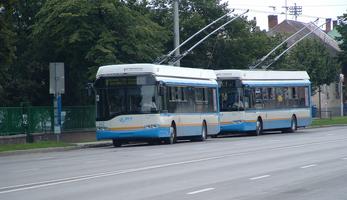Safety and security training for public transport drivers
Thematic areas
Collective passenger transport & shared mobility
Summary
The measure focused on training public transport drivers in new safety technologies, driving methods for special environmental circumstances, and energy-efficient driving.
Implementing sustainable mobility
Prior to the CIVITAS measure, most of the training sessions for public transport drivers were aimed at confirming their physical competence and did not include cost-effective driving training.
Although accidents involving public transport vehicles are not frequent in Debrecen, considering the number of vehicles in daily operation, with extra training the number can be lowered even further, contributing to the overall popularity and usage of the service. Wet or frosty roads can be very dangerous for bus passengers, who are either standing or sitting without seat belts.
In addition, the cost-effectiveness of public transport vehicles mainly depends on the drivers’ skills, as appropriate driving techniques can reduce fuel consumption.
The main objective of this measure was therefore to improve the skills of bus drivers, to increase public transport safety and attractiveness, and to decrease operational costs.
Progress
In August 2007, Hajdu Volan (the long-distance bus operator) and DKV (the local public transport operator) organised training seminars that had a theoretical and practical element. The theoretical sessions covered safe driving techniques and new safety technologies. This theory could be then be tested in practical sessions in the presence of a professional trainer, covering such topics as emergency braking, handling curves and slippery roads, driving on steep uphill and downhill roads, and fuel-saving driving techniques.
There was also training on dealing with passengers in specific situations, and on safe and fuel-efficient driving. Communication training was designed to prepare and advise public transport staff to handle conflict situations. So-called de-escalation training was designed to help drivers and controllers react in emergency situations and provided information about legal aspects and liability issues. Special training was provided on drug and alcohol abuse and their effects. Drivers and controllers were taught how to behave towards intoxicated or angry passengers and how to handle extreme situations.
Outcomes
Driver training was demonstrated to benefit the city as a whole. Improved feelings of safety and security among passengers contribute to the popularity of public transportation, helping to ease congestion and improve air quality.







